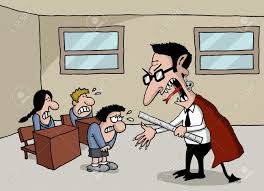Speaking is an art, and in the classroom, communication is king – Mr Watson-Davis
Our new Head of History, Mr Watson-Davis, offers an insight into how teachers should talk to their pupils…
What we say and how we say it can have a huge effect on the person or people we are talking to, especially when standing in front of a group of teenagers. What we often forget is that words are easily interpreted by different individuals in various ways. A phrase as simple as ‘Just listen’ could focus one person, but create a huge conflict with another.
Good communication between you and your class can make the difference between an outstanding lesson and a series of unnecessary teacher interventions to clarify exactly what was intended to be done. So as classroom practitioners, what can we do to minimise miscommunication?
The first lesson for classroom communication is making sure you’re on the same level as the students. Most pupils don’t have the same order of language as a graduate or adult, so the first thing to do is avoid using words which they simply don’t understand…unless you explain them. It’s easy for a pupil to be alienated simply by not understanding what is being discussed. As a teacher, it’s imperative to think before you speak and to slowly build subject vocabulary before launching into any explanation that could leave half the class baffled. Make sure ‘off task’ is not actually-and literally-off message.
Another area is prosody. This refers to the tone of voice, which is a tool that teachers naturally develop over time. Tone is something a teacher must harness – a natural tone for general interaction, a deeper one to get attention and lighter to show compassion.
Figuring these three out will help in most situations, and as time goes on you’ll find ways to modify your existing repertoire. Keep in mind, though, that your tone needs to be clear. Pupils will respond to different tones and become confused if you aren’t consistent.

To denote a sense of disappointment, you may wish to drop your tone slightly. In contrast, to show your excitement about a response or a piece of work you may wish to heighten your tone. Set out your stall early on – it will benefit you in the long term.
Using a tone shift instead of a volume shift will yield some interesting results, not to mention saving your voice. This, after all, is your most valuable tool in the classroom, so looking after it is very important. A variation of tone will allow your vocal chords some rest and heavily reduce strain on the throat. A constantly raised voice is not sustainable, so talk smart.
Closely linked to prosody is volume. You can’t expect raising your voice to be a wholly effective way of dealing with conflict. More often than not, a raised volume will escalate problems – don’t fuel the fire.
Young people can’t control their emotions as well as adults, so an effective strategy in the face of rising irritation or distress is to speak more quietly. This can de-escalate the situation, as it’s impossible to argue with somebody who’s not responding.
Children mimic what is in front of them. Keeping your volume low creates a passive front, which is a great way of quelling aggression. Don’t accidentally escalate by raising your volume-as in poker, a raise doesn’t always end in a fold.
Transactional communication (the exchange of information) should make up the bulk of any lesson, but don’t neglect interactional communication (building social relationships) – “How was the weekend?”; “You had a haircut?”; “Nice new coat.” You would not believe how productive this can be with a 15-year-old.
Choose what you say carefully-language can be a tool for building bridges, and act as a ladder into learning. It can also work as a wall to understanding and a barrier to progress.















Post Comment
You must be logged in to post a comment.